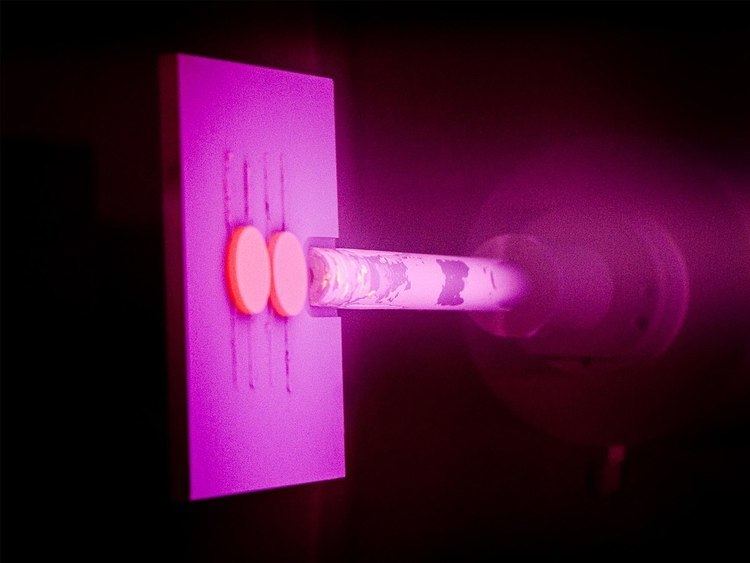Physical vapor deposition (PVD) describes a variety of vacuum deposition methods which can be used to produce thin films and coatings. PVD is characterized by a process in which the material goes from a condensed phase to a vapor phase and then back to a thin film condensed phase. The most common PVD processes are sputtering and evaporation. PVD is used in the manufacture of items which require thin films for mechanical, optical, chemical or electronic functions. Examples include semiconductor devices such as thin film solar panels, aluminized PET film for food packaging and balloons, and coated cutting tools for metalworking. Besides PVD tools for fabrication, special smaller tools (mainly for scientific purposes) have been developed.
Common industrial coatings applied by PVD are titanium nitride, zirconium nitride, chromium nitride, titanium aluminum nitride.
The source material is unavoidably also deposited on most other surfaces interior to the vacuum chamber, including the fixturing used to hold the parts.
Cathodic Arc Deposition: In which a high-power electric arc discharged at the target (source) material blasts away some into highly ionized vapor to be deposited onto the workpiece.Electron beam physical vapor deposition: In which the material to be deposited is heated to a high vapor pressure by electron bombardment in "high" vacuum and is transported by diffusion to be deposited by condensation on the (cooler) workpiece.Evaporative deposition: In which the material to be deposited is heated to a high vapor pressure by electrical resistance heating in "high" vacuum.Pulsed laser deposition: In which a high-power laser ablates material from the target into a vapor.Sputter deposition: In which a glow plasma discharge (usually localized around the "target" by a magnet) bombards the material sputtering some away as a vapor for subsequent deposition.Sublimation sandwich method: Used for creating man-made crystals.Various thin film characterisation techniques can be used to measure the physical properties of PVD coatings, such as:
Calo tester: coating thickness testNanoindentation: hardness test for thin-film coatingsPin on disc tester: wear and friction coefficient testScratch tester: coating adhesion testX-ray micro-analyzer: investigation of structural features and heterogeneity of elemental composition for the growth surfaces PVD coatings are sometimes harder and more corrosion resistant than coatings applied by the electroplating process. Most coatings have high temperature and good impact strength, excellent abrasion resistance and are so durable that protective topcoats are almost never necessary.Ability to utilize virtually any type of inorganic and some organic coating materials on an equally diverse group of substrates and surfaces using a wide variety of finishes.More environmentally friendly than traditional coating processes such as electroplating and painting.More than one technique can be used to deposit a given film.Specific technologies can impose constraints; for example, line-of-sight transfer is typical of most PVD coating techniques, however there are methods that allow full coverage of complex geometries.Some PVD technologies typically operate at very high temperatures and vacuums, requiring special attention by operating personnel.Requires a cooling water system to dissipate large heat loads.As mentioned previously, PVD coatings are generally used to improve hardness, wear resistance and oxidation resistance. Thus, such coatings are used in a wide range of applications such as:
AerospaceAutomotiveSurgical/Medical Dies and moulds for all manner of material processingCutting toolsFirearmsOpticsWatchesThin films (window tint, food packaging, etc.)Darts barrelsMetals (Aluminum, Copper, Bronze, etc.) 
